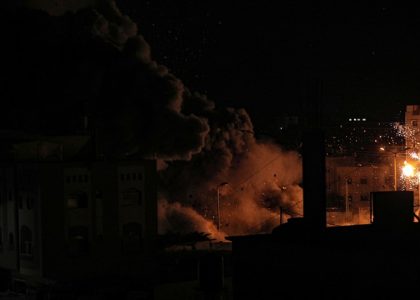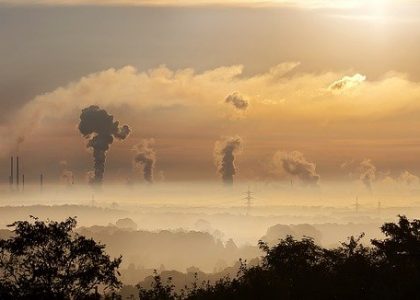Famous for his ability to control the public narrative, Prime Minister Narendra Modi and his Hindu nationalist Bharatiya Janata Party (BJP) face an avalanche of criticism after thousands of people in India have died from lack of oxygen and hospital beds during the second wave of the COVID-19 pandemic. A mixture of authorities’ overconfidence and a new, more aggressive variant of the coronavirus, which is causing 400,000 daily infections and nearly 4,000 deaths, have sent COVID-19 spiraling out of control in the country. The fragile situation has unleashed a wave of criticism that has not gone down well with Modi.
Last week, the Ministry of External Affairs called an emergency meeting with representatives of Indian embassies around the world and ordered its diplomats to “present an appropriate picture” of the government’s efforts to combat the pandemic. The move was in response to irritation caused by a series of reports in the international press about the lack of preparedness for the second wave and comments against Modi’s allowing mass events such as the Holi festival.
The ministry sent official denials to many foreign publications. Although the messages did not specifically address the allegations of incompetence, the language was very harsh. In the case of The Australian newspaper, the ministry accused it of wanting to tarnish India’s reputation and called the published reports “biased and malicious.”
Open Fronts
The BJP and Modi are used to criticism. Even before the pandemic began, the government had numerous open fronts, with hundreds of thousands of students, trade unionists, farmers, members of minorities, and human rights groups in constant protest against its policies. His meteoric rise to power over the past decade has been characterized by his ability to appeal to the masses but also by his talent for winning the support of the media and the judicial apparatus, which are now giving him the most headaches.
Several High Courts across the country have censored the Executive for not fulfilling its commitments on the management of the pandemic. Some of these include:
- Lack of vaccine provisions
- Scarcity of medicines
- Failure to provide quality equipment
- Absence of oxygen tanks and hospital beds
The Delhi High Court, breaking with the tradition that the judicial arm should stay away from the functions of the executive arm, ordered the government to supply 700 tons of oxygen to COVID patients in the capital’s metropolitan region. When he did not obey, the court went a step further and initiated contempt proceedings against him.
Criticism and Control
As for the media, news criticizing the government was found only in small, independent media. Shiv Kumar, an editor of Pratidhvani, a Kannada-language news portal based in Bangalore, says: “All the big media conglomerates, both TV and newspapers, have suddenly turned against Modi. Even the most right-wing publications, which until now acted as mouthpieces for the government, have turned against him.”
The other dispute is being fought on social media. For the second week, hashtags calling for Modi’s resignation have been trending again in India. People post desperate appeals for oxygen and hospital beds on platforms such as Twitter, Facebook, and WhatsApp.
The Modi government issued an official request to block content on some accounts critical of his administration, “given the misuse of social media platforms by certain users to spread false or misleading information,” said the Ministry of Information Technology.
Uncertain Future
The U.S. data firm Morning Consult has presented the following data regarding the citizens’ satisfaction with Modi’s government.
- The prime minister’s approval rating has fallen from 74% in March to 65% in May.
- The percentage of people who disapprove of his work has risen from 20% to 29%.
However, experts disagree on what the current crisis means for the future of the BJP and Modi.
Suraj Yengde, a postdoctoral research fellow at Harvard’s Kennedy School, senses a tide of outrage against the prime minister and his right-hand man, Amit Shah, in all quarters. Yengde, the author of the international bestseller Caste Matters, has the feeling that the opposition does not yet have any credible face to serve as an alternative to Modi’s appeal. “His rivals within the party are more numerous than ever. And they will be the architects of the prime minister’s downfall.”
While sharing Yengde’s view on changing public sentiments, Deepa Kurup, an economist and professor at Oxford, is more cautious in her predictions. “I don’t think the pandemic is the only area where this government has failed,” she says. “The Indian economy was suffering a slowdown even before it broke out. The new tax regime, the demonetization of the currency, the agrarian laws… People opposed these measures, and millions of people demonstrated.”
Kurup stresses that many analysts believed that Modi would not get a second term in 2019 because of his economic failures. Then, Modi faced dissent within his party, and corporate funds for opposition formations were fairly increased.
Veteran journalist and editor of The News Minute portal, Dhanya Rajendran, says state and national elections are entirely different. “In national elections, there doesn’t seem to be anyone capable of challenging Modi yet. In-state elections, people vote on local issues. However, in national elections, Modi remains the most popular leader because the opposition is divided and has not yet worked out what the power-sharing would look like.”






